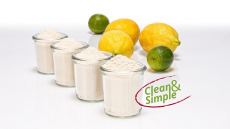Multi-layer emulsions could provide flavour release solutions
The study, published in the journal Food Hydrocolloids demonstrated that a multi-layer emulsion made from beta-lactoglobulin and pectin provides a way to control the release of volatile organic compounds such as flavour and aroma compounds – by changing certain conditions such as pH or salt concentration.
The authors said that the technique could be tailored to control conditions when a compound is release so that they are only emitted as a food is placed in the mouth.
“The results of this study demonstrate the capability of using multi-layer oil/water emulsions for controlled release of volatile organic compounds,” wrote the researchers, led by Ofir Benjamin of Riddet Institute and the University of Otago, both in New Zealand.
They added that multi-layer emulsions appear to have potential advantages over primary ones in terms of carrying volatile organic compounds “by maintaining a similar volatile release profile to a stable emulsion system, and for designing controlled release using external triggers such as pH and salt.”
Flavour release
The acceptance of food products by consumers greatly relies on the sensory perception of volatile food flavours. As such, flavours are among the most valuable ingredients in any food formula.
Even small amounts of some aroma and flavour compounds can be expensive, and because they are usually delicate or volatile, preserving and controlling the release of them is often a top concern of food manufacturers.
Benjamin and his colleagues explained that any loss or degradation reactions of such volatile organic compounds (VOCs) during processing or storage will affect product quality.
As a result, considerable effort has been put into preparing flavour compounds and delivery systems that provide greater stability and flavour intensity, coupled with controlled release.
“A well-designed encapsulation delivery system needs to provide the following attributes: protection against environmental stresses, reduction in losses by diffusion, compatibility with a food system, and the ability to control the VOC release using specific triggers found under oral conditions,” said Benjamin and his team.
Study details
The researchers explained that while primary emulsions are suitable for carrying lipophilic compounds such as VOCs, they are also “prone to physical instability due to environmental conditions, and provide limited control over the VOC release.”
They noted that recently developed novel multilayer oil-in-water emulsion has “a potential advantage over other delivery systems due to a complex interfacial system with an ability to control the release of bioactive compounds.”
They measured the release of VOCs with different physiochemical properties from aqueous solutions and emulsion systems, finding that VOC release was increased for the unstable primary emulsions at pH 5, whereas the multi-layer emulsions were stable.
The team explained that strong hydrophobic interactions and hydrogen bonds with a secondary dense layer of pectin may be responsible for the improved retention, noting that increasing pH and ionic strength acted as a VOC release trigger by detaching the pectin from the interface.
Source: Food Hydrocolloids
Published online ahead of print, doi: 10.1016/j.foodhyd.2011.08.008
“Multilayer emulsions as delivery systems for controlled release of volatile compounds using pH and salt triggers”
Authors: O. Benjamin, P. Silcock, M. Leus, D.W. Everett


























